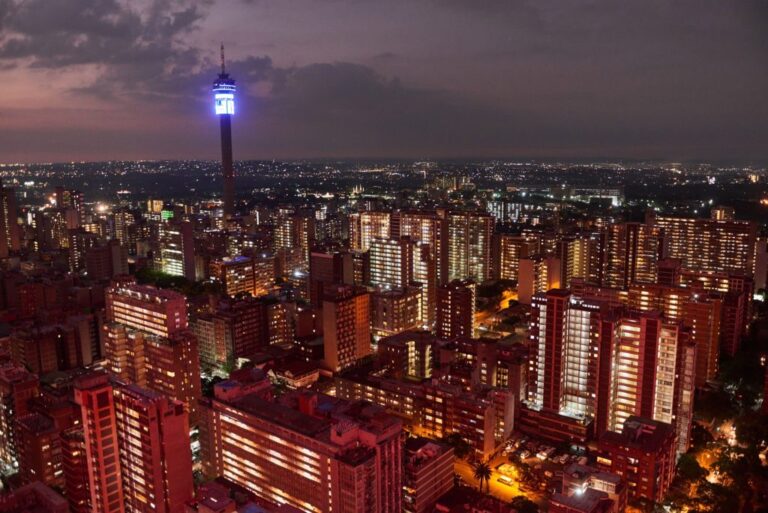Statistics SA says that in the first six months of last year, municipalities (including metros) spent R50.2 billion on bulk electricity purchases, with R60 billion in sales. This means an effective R9.8 billion trading profit which they are able to use to cover expenses. This equates to a trading margin of 16%.
In effect, practically all municipalities across South Africa cross-subsidise other municipal services with this ‘surplus’ from selling electricity. According to a report from National Treasury, electricity revenue in 2020/21 was nearly 33% of total revenue for metropolitan municipalities. For cities (urban areas), this was even higher at close to 37.5%.
ADVERTISEMENT
CONTINUE READING BELOW
Read:
However, a Moneyweb analysis of 2023/24 budgets for the five largest metros in the country shows that, on average, electricity revenue is now 35.6% of total revenue. This increase is largely due to the steep increase in the price of electricity in recent years.
The five metros are Johannesburg, Cape Town, eThekwini, Ekurhuleni and Tshwane.
All five have over four million inhabitants (Joburg and Cape Town are close to five million). The other three metros – Nelson Mandela Bay, Buffalo City and Mangaung – are excluded from this study as each has only about one million residents.
There is a large divergence between the five.
In one of the five metros, electricity revenue is ‘just’ 30.6% of total revenue (Joburg), while in another it is 41.4% (Ekurhuleni). All of these calculations exclude grants and subsidies from national government. Basically, this is the normal operating budget of each metro.
For Ekurhuleni, this is an astonishing number – approaching nearly half of total revenue being collected in the East Rand. Expenditure tells the other half of this story with Joburg the lowest and Ekurhuleni, predictably, the highest.
| 2023/24 budgets | Joburg | Cape Town | eThekwini | Ekurhuleni | Tshwane |
| Population | 4,803,262 | 4,772,846 | 4,239,901 | 4,066,691 | 4,040,315 |
| Total revenue | R75.394bn | R58.631bn | R53.149bn | R55.327bn | R44.705bn |
| Electricity revenue | R23.098bn | R19.682bn | R18.782bn | R22.878bn | R16.642bn |
| Electricity as a % | 30.6% | 33.6% | 35.3% | 41.4% | 37.2% |
| Total expenditure | R73.3bn | R59.091bn | R52.186bn | R54.925bn | R44.617bn |
| Bulk electricity | R16.403bn | R14.099bn | R15.148bn | R18.143bn | R14.378bn |
| Electricity as a % | 22.4% | 23.9% | 29.0% | 33.0% | 32.2% |
| Electricity trading profit | R6.695bn | R5.583bn | R3.634bn | R4.735bn | R2.264bn |
| 29% | 28% | 19% | 21% | 14% |
But because electricity purchases only comprise 22% of the City of Joburg’s total expenditure versus the 33% in Ekurhuleni, the net result is very different.
From this analysis, it is possible to calculate the trading margin from electricity sales in each metro.
In other words, this is how much profit they are making from the sale of bulk electricity (mostly from Eskom with the exception of Kelvin Power Station in Johannesburg and Steenbras pumped storage scheme in Cape Town) to end customers – households and businesses.
Astonishingly, the trading profit in the City of Johannesburg from the bulk sale of electricity is close to R7 billion, which equates to a trading margin of 29%.
Cape Town is a close second, with a trading margin of 28%. eThekwini and Ekurhuleni trail at about 20%, while in Tshwane the margin is only 14%.
ADVERTISEMENT
CONTINUE READING BELOW
Read:
It is important to note that metros (like all municipalities) will purchase bulk electricity from Eskom at the same legislated rate. This means that their ‘costs of goods sold’ will be the same per kilowatt hour.
Obviously, tariffs are a critical factor here as this will determine the price paid by end consumers for each kilowatt hour (kWh) consumed. But efficiency is a further factor as larger losses on the network (due to non-payment and/or theft) will result in a distortion.
Too low, too high …
Tshwane’s trading margin for electricity is hopelessly too low when one compares it to other metros and other municipalities.
There are only two ways to rectify this: adjust tariffs upwards and/or drive bulk purchases downwards. The former is, rather obviously, the easier approach.
Having said that, the trading margins in Joburg and Cape Town are probably a little too high. Postpaid customers in Joburg – who pay the most for electricity out of all metros in the country – ought to feel aggrieved.
One wonders if the National Energy Regulator of South Africa (Nersa) and the South African Local Government Association (Salga) are paying any attention to this at all. Likely not.

